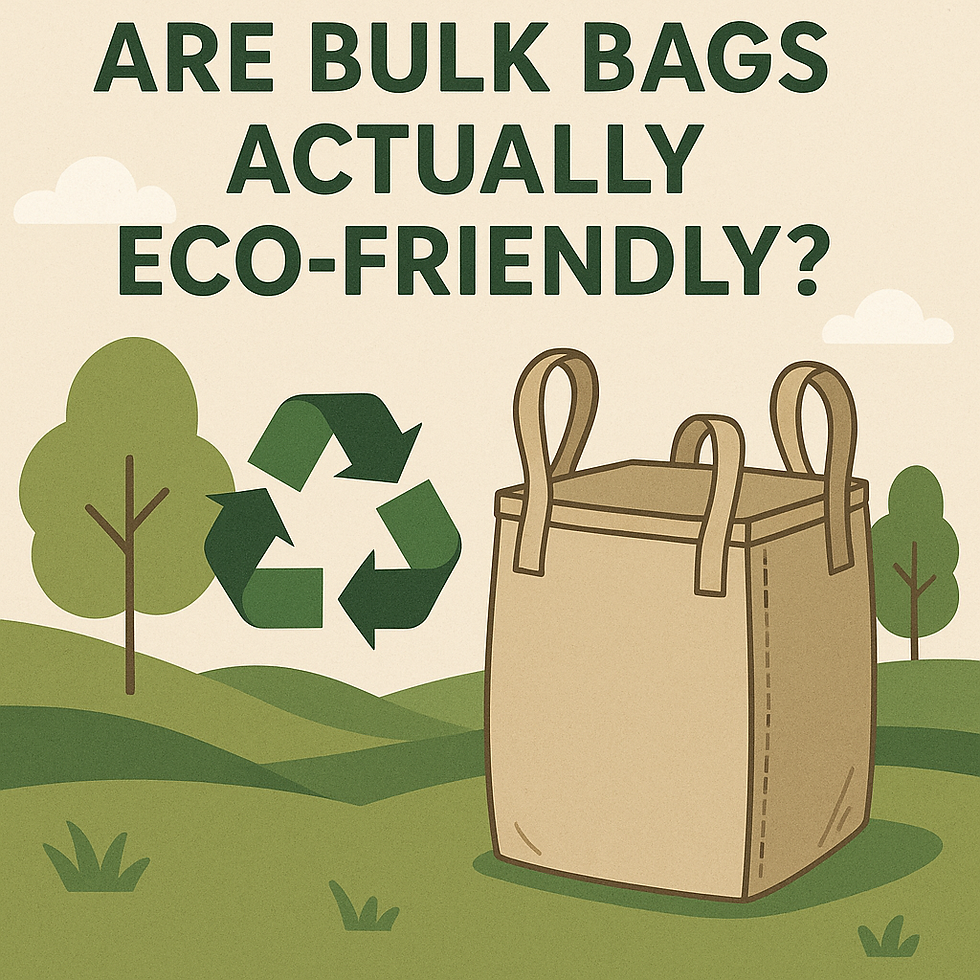Are Bulk Bags Eco-Friendly?
- judi306
- Aug 1
- 1 min read
A first look at Sustainability in FIBC packaging.

In nearly every industrial sector—whether it’s agriculture, construction, mining, or food processing—bulk bags, also known as Flexible Intermediate Bulk Containers (FIBCs), have become essential. Known for their strength, versatility, and ability to carry up to 2,000 pounds or more, bulk bags have revolutionized how companies move, store, and package large quantities of product.
But in today’s environmentally-conscious world, the question is becoming more important: Are bulk bags actually eco-friendly?
With industries under pressure to reduce carbon footprints, eliminate single-use plastics, and improve circularity in their supply chains, businesses are re-evaluating the materials and containers they use.
Packaging—especially on a large scale—can be one of the most visible contributors to waste and emissions. So, it makes sense to take a closer look at something as widely used as bulk bags.
On the surface, FIBCs are made from plastic-based materials, which might raise red flags. However, the full picture is more nuanced—and surprisingly positive. Unlike many traditional packaging options, bulk bags are highly reusable, recyclable, and often replace multiple layers of other packaging, which can significantly reduce overall material usage.
In this blog series, we’ll explore how bulk bags fit into sustainable business practices. From how they’re made to how they can be reused, recycled, and even improved upon through new technology, we’ll dig into the environmental impact of FIBCs—and what that means for your operation.
So, if you’re in logistics, procurement, or simply curious about how to make your supply chain more sustainable, stay tuned. The humble bulk bag might be greener than you think.




Comments